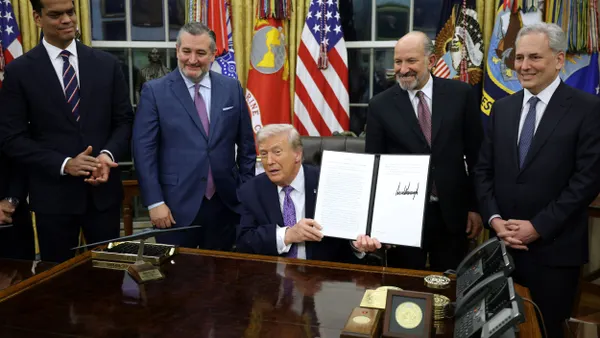Dive Brief:
- A former Walmart employee was unable to prove that he was illegally fired due to his age, the 9th U.S. Circuit Court of Appeals has ruled (Mauran v. Walmart Inc., No. 17-56494 (9th Cir. Sept. 12, 2019)).
- Although Warren Mauran established a prima facie case of age bias, Walmart offered legitimate, non-discriminatory reasons for his termination. There was evidence to support Walmart's allegation that Mauran had violated a policy, and a much younger employee had been terminated for the same behavior for which Mauran was initially "coached" but not fired.
- Because Mauran failed to present sufficient evidence to create a triable issue of pretext, the 9th U.S. Circuit Court of Appeals affirmed a district court's summary judgment for Walmart. However, the 9th Circuit vacated and remanded the district court's decision to have Mauran pay Walmart's court costs, saying "the district court failed to appreciate the potential chilling effect on future civil rights actions" or the economic disparity between the parties.
Dive Insight:
Walmart has been in the headlines a lot recently, and not all of the coverage has been positive. Earlier this month, a jury awarded a Walmart cart pusher $5.2 million following a U.S. Equal Employment Opportunity Commission (EEOC) lawsuit alleging disability discrimination. In another suit, the agency alleged Walmart violated the Americans with Disabilities Act (ADA) by refusing to allow an applicant with a disability to take a physical assessment. And earlier this year, the store settled a separate EEOC suit to settle allegations it refused to provide accommodations to deaf employees working at a Washington, D.C., store.
The company did recently emerge victorious in a gender bias class action, but the court deciding the case concluded that something was "rotten" within Walmart's corporate culture.
Still, the facts in Mauran show that Walmart correctly held multiple employees to the same standard. Uneven discipline can serve as evidence of discrimination in suits like these, so HR professionals may need to ensure that policies are applied evenly, and those that violate those policies all suffer the same consequences. There will, of course, be exceptions, as EEOC notes in a guidance, which means that documentation is crucial. And because HR can't be involved in every interaction, manager training remains key to compliance with nondiscrimination laws.













